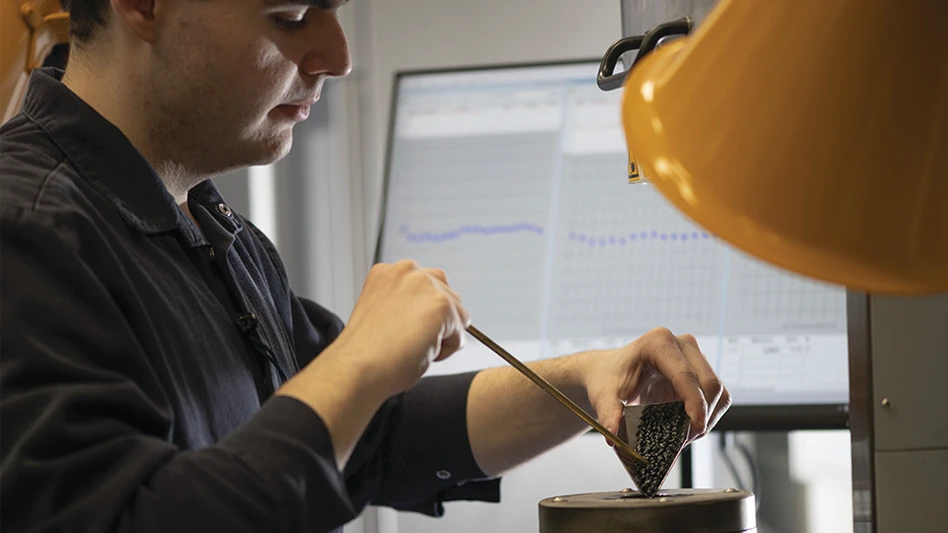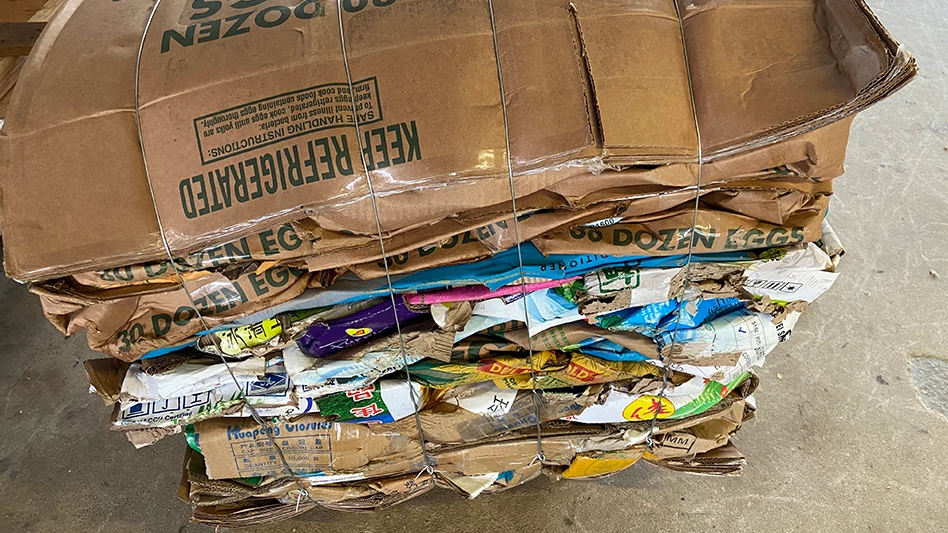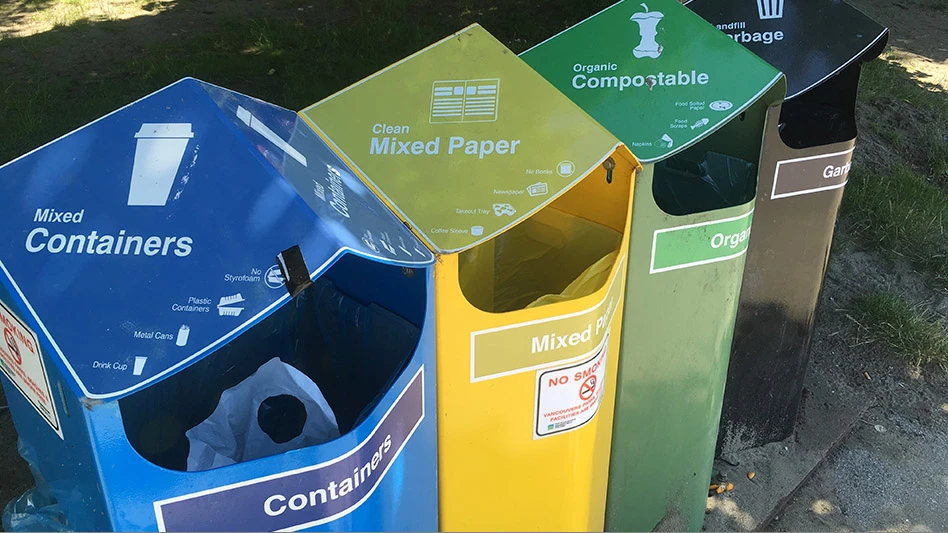 Industries that are commodity based, such as the metals recycling industry, are subject to market-driven pricing volatility that is actually outside the industry participants’ control. If you trade in nonferrous metals, the base price of the commodity is set by the value of that particular commodity contract as traded on various commodity exchanges, such as the London Metal Exchange (LME), the Chicago Mercantile Exchange (COMEX) or the Shanghai Metal Exchange (SME).
Industries that are commodity based, such as the metals recycling industry, are subject to market-driven pricing volatility that is actually outside the industry participants’ control. If you trade in nonferrous metals, the base price of the commodity is set by the value of that particular commodity contract as traded on various commodity exchanges, such as the London Metal Exchange (LME), the Chicago Mercantile Exchange (COMEX) or the Shanghai Metal Exchange (SME).
Many metals industry participants are trading metals futures on these exchanges as are nonmetals industry participants. However, large volumes of trades are controlled by various investment vehicles that heavily influence the market but do not physically handle the commodities they are trading. Ultimately, metals industry suppliers, consumers and traders operate their respective businesses with commodity pricing driven by these investment vehicles.
Historically, ferrous scrap pricing was determined by supply and demand fundamentals heavily influenced by geography. However, a ferrous contract recently was introduced, and now ferrous scrap pricing may be subject to the influence of participants outside of the industry.
Breaking with tradition
Traditionally, the exchange prices for each commodity were set by fundamental economic principles driven by supply and demand. This lent itself to somewhat stable markets. Within the last 10 years, however, base metals have become increasingly more attractive to the investment community, including but not limited to mutual funds, hedge funds and other various metals-based investments. As this occurred, the now familiar commodity pricing roller coaster ride began.
At times, metals prices began to move 2 percent to 3 percent per day. However, fluctuations in pricing began to exceed these movements. For instance, in May 2012 the exchange price of copper was about $3.80 per pound, and by the end of June it had fallen to $3.29 per pound, representing a price decrease of 13.5 percent. However, within the last month or so, the exchange copper price has reversed itself and moved from $3.40 per pound to as high as $3.80 per pound. This 40-cent-per-pound change is an increase of more than 11 percent.
Inventory and open priced orders are exposed to large price swings. If a company is carrying a copper inventory valued at $1 million, and the market experiences a downward swing of 11 percent, that equates to an unrealized loss of $110,000.
These dramatic swings in metals pricing, and specifically copper pricing, occur without regard to supply and demand fundamentals within the metals industries. Instead, the price volatility has been driven by nonindustry participants. In other words, various investment funds betting on movements in metals prices also are driving price volatility.
The investment funds’ activities serve as the primary consideration for why scrap metal recyclers should contemplate using a mechanism to limit their exposure to fluctuations in exchange-based pricing. Hedging is an appropriate vehicle to mitigate exposure to price volatility.
Hedging your position
Commodity based industries engage in hedging to protect future sales and purchases of various metals while providing the industry the ability to have a price to buy or sell against at any given moment. A time-based disconnect exists between the sale, purchase and use of metals and, as such, leaves the participant exposed to the fluctuations in exchange pricing. This time-based disconnect occurs because of the time involved in collecting, preparing and shipping metals to various customers at each phase of the business cycle.
The hedging of metals prices serves to level the time-based inequity of the metals transaction. Hedging provides the industry with the necessary pricing liquidity to allow for the setting of prices for each commodity at any given time. Without hedging, it would not be possible to set pricing under a risk-management program when the upper levels of the industry are either “out of the market” or purchasing or selling products on “open priced” or “formula based” pricing options.
In the scrap metal industry, hedging against price fluctuations is achieved differently at each level of the business. The key thing to remember is that at every level of the business, price ultimately is based on, and traceable to, an exchange price. At the retail scrap purchasing level, peddlers lock in pricing by selling to the retail yard at a fixed price. The retail yard sets its buying prices based on a wholesaler’s pricing. Likewise, the wholesaler’s price is based on a larger scrap metal dealer’s or a metal broker’s pricing, which is based on sales to consumers at prices that are set against an exchange’s price. The entire industry from retail buying to the sale of a consumer product is intertwined, and pricing is consistently driven by the price of a particular commodity as traded on one of the exchanges.
However, many factors are associated with setting commodity pricing and with mitigating the risk of exposure to an exchange’s price fluctuations. If you are carrying inventory, the value is changing with every fluctuation of the exchange prices. If the commodity is purchased or ordered but requires some form of processing or delivery is set at some point in the future, participants are exposed to the market risk of price fluctuations.
For the industry to function fluidly, every participant needs a price to buy against. Brokers and larger-volume-yards establish pricing liquidity for the scrap metal industry. Yet, the ultimate challenge is mitigating the risk of exposure to exchange pricing when metals industry participants and supply and demand fundamentals are not driving price.

Mitigating risk
The question is whether a metals trader or dealer is able to design a risk-management program to mitigate the risk of the price fluctuations of using the exchanges. The answer is yes, through developing a comprehensive hedging program.
Many people will hear the word “hedging” and say, “Isn’t that just speculating on the price of the commodity?” The reality is that without hedging you are speculating on the price.
In the simplest terms, hedging allows the metals trader or dealer to use the exchange as the opposite side to whatever transaction being entered into. This activity establishes pricing liquidity and allows pricing of the commodity to flow all the way down to the retail level.
Illustration A2 (p. 58) demonstrates how hedging can protect profitability in a transaction compared with Illustration A3 (p. 59), which is the same transaction without hedging. Remember that when you purchase physical metal, you sell contracts on the exchange, and when you sell physical metal, you buy contracts on the exchange.
This example is of a copper brokerage transaction where both the sale and purchase of the metal were done May 1, 2012, with a gross margin at 5 cents per pound. The sale and purchase are done at a spread to COMEX. The sale was at COMEX less 5 cents per pound, and the purchase was at COMEX less 10 cents per pound. The consumer priced the sales side May 1 by locking in the COMEX copper value. The supplier did not lock in the COMEX copper value until May 4, 2012. Inherently, there was a risk to price fluctuation for 72 hours.

Practical Considerations
If you decide to use hedging to mitigate price risk, you must be aware of a number of important variables. First, there is a requirement to post initial margin money as shown in Illustration A1. Margin serves as collateral. The amount of margin required is determined by the size of your hedge position, and posting margin will have an effect on cash flows.
Another consideration involves the effect of carrying a hedge position on your company’s financial statements. It is a good practice to do a monthly “mark to market.” A mark to market involves bringing all of your priced or provisionally priced orders and all priced hedgeable inventories to a market value determined as of the last day of each month. This offsets any unrealized gains or losses in your hedging account.
As stated earlier, the exchange is always the other side of your transaction, so you need to account for the physical unrealized gains/losses on your books, records and financial statements. You should consult with your accounting department or external accounting firm prior to starting a hedging program.
Many companies, both large and small, will decide not to actively hedge their purchases, sales or inventory using the exchanges but instead will design a risk management program with the help of metal brokers. Metal brokers in the industry will use hedging to manage price risk on behalf of their consumers and suppliers, which will not affect the consumers’/suppliers’ cash flow. Metal brokers also offer formula pricing and other pricing options that allow consumers/suppliers to effectively hedge their respective sales, purchases and inventory by using the metal broker as a replacement for the commodity exchanges.
Each exchange operates under its own rules and policies and is governed by the laws of its domicile. For instance, COMEX is governed by the U.S. laws, specifically, the Commodity Exchange Act. Before engaging in trading, brokers or dealers should consult professionals to develop a working understanding of the brokerage account agreements and governing laws.

The authors are with Solon,Ohio-based Premier Metal Services LLC (www.premiermetalservices.com). Premier buys and sells ferrous and nonferrous scrap and offers risk management programs to suppliers and consumers.

Explore the November 2012 Issue
Check out more from this issue and find your next story to read.
Latest from Recycling Today
- Acerinox names new North American Stainless CEO
- Greenwave closes 2024 books with red ink
- Steel Dynamics nets $217 million on record shipments
- Massive Chinese steelmaking rebound recorded in March
- LME looks into sustainable metal pricing
- OnePlanet Solar Recycling closes $7M seed financing round
- AMCS launches AMCS Platform Spring 2025 update
- Cyclic Materials to build rare earth recycling facility in Mesa, Arizona





